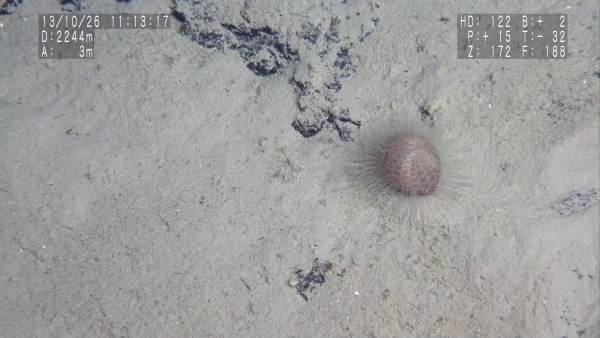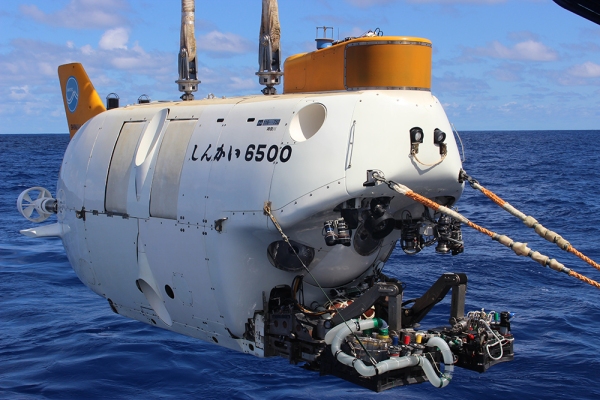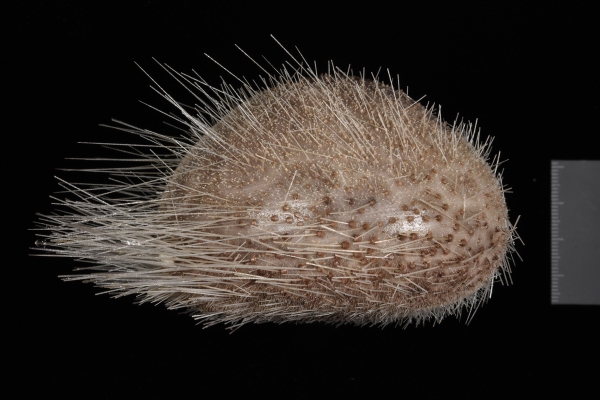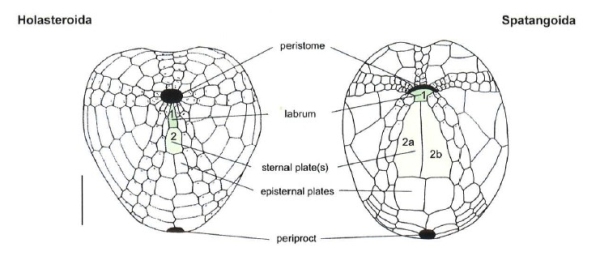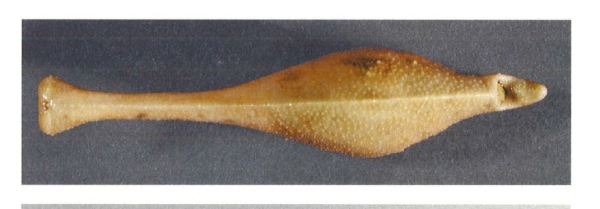This week’s critter is an unknown species of an unusual order of sea urchins – the Holasteroida.
This specimen was photographed on the sea-floor by the Japanese research submarine Shinkai 6500, deployed from the Research Vessel Yokosuka as part of the Japan Agency for Marine-Earth Science and Technology (JAMSTEC) Quest for the Limit of Life (QUELLE) around-the-world voyage programme in 2013. The strange, long-spiked urchin was found on a muddy/rocky substrate on the Canopus Seamount, part of the Louisville chain of seamounts to the northeast of New Zealand, at a depth of 2244 m deep.
Quest for the Limit of Life (QUELLE) website
New to science?
The specimen has been examined at NIWA and compared with known species of holasteroids. Photographs have also been shown to sea urchin experts in the United States and Australia. So far no-one seems to recognise it - do you?
The next step will be to make a fuller, more formal examination and, if it is indeed new to science, publish a complete description of it and find a name for it.
What fossil records can tell us?
Although the order Holasteroida comprises of only about 40 known living species (in five families), there is a rich fossil record extending back to the start of the Cretaceous Period.
These fossils show that holasteroids were once common in shallow water and as a group made several migrations over time into the deep water.
Some forms closely resemble the more common heart urchins (Spatangoida) which mostly live in shallower water, and both orders have independently developed fascioles, bands of minute modified spines, which maintain water currents in the buried portion of the test, and have enlarged tube-feet around the peristome (mouth). The two orders differ in the subtle arrangement of the test plating posterior to the peristome (mouth) – a feature that can be difficult to observe, especially as these urchins are frequently very small and very fragile.
Dominating the deep
Holasteroids contains some of the weirdest-shaped sea urchins and are the dominant group of sea urchins in the deep-sea.
The strangest and deepest of all are the often triangular or bottle-shaped Pourtalesiidae, with specimens recorded from as deep as 6800 m in the Java Trench in the Indian Ocean.
Further information
Information about The JAMSTEC QUELLE 2013 voyage programme
References
Schultz (2009). Sea Urchins II. Worldwide irregular deep water species.
Mortensen (1950). A Monograph of the Echinoidea V.1. Spatangoida I.
Smith, A. B. (2004), Phylogeny and systematics of Holasteroid echinoids and their migration into the deep-sea. Palaeontology, 47: 123–150. doi: 10.1111/j.0031-0239.2004.00352.x

